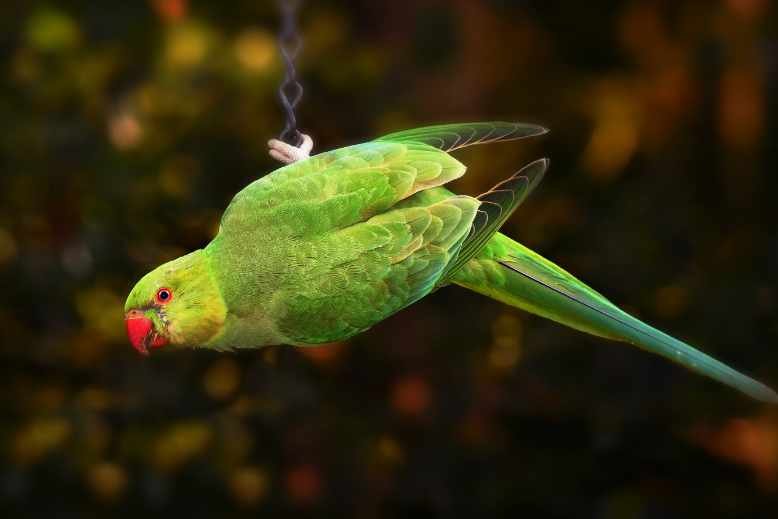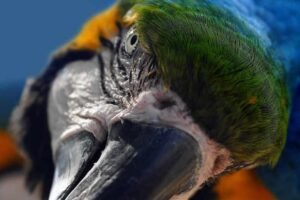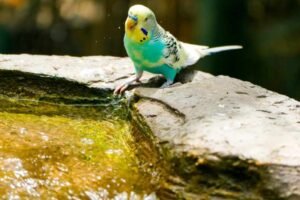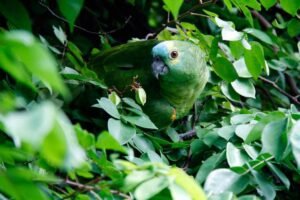Can a domestic parrot survive in the wild? The chances of a domestic parrot surviving in the wild are slim. Domestic parrots lack the knowledge and practices necessary to survive in the wild. These captive birds need the appropriate climate, the right conditions, and a whole lot of luck to survive on their own.
Many bird lovers believe that caged parrots mentally struggle, and they can do better when out in the wild. So releasing a captive parrot into the wild is the right thing to do. But is it?
Let’s find out!
Can a domestic parrot survive in the wild?
Well, some less encouraging variables come with these beliefs. Domestic parrots are cared for by their owners. They don’t have any knowledge to survive in the wild.
Captive parrots cannot understand which foods are safe as they depend on their humans for food and other necessities. These birds will struggle to survive the extreme weather conditions. Plus, they will be weak defendants.
When encountering a predator, a domestic parrot doesn’t know how to integrate. Caged birds don’t get the complex social hierarchy of wild parrots, so they will be shunned away.
If you open your birdcage and let your parrot be free, it may not survive for more than a few days. Although parrots have a greater level of emotion and intelligence than average birds, this survival is still challenging. Plus, it is illegal in many regions to set parrots free for some pretty good reasons. Such as:
- They can cause damage to the environment
- Their breeding can make them an invasive species
- If the released birds are sick, they can spread the disease in the area, which can endanger other healthy birds and animals.
Why is it difficult for domestic parrots to survive in the wild?
There are many reasons why domestic parrots are not the right fit for the wild. Some of them are as follows:
- Weak bodies
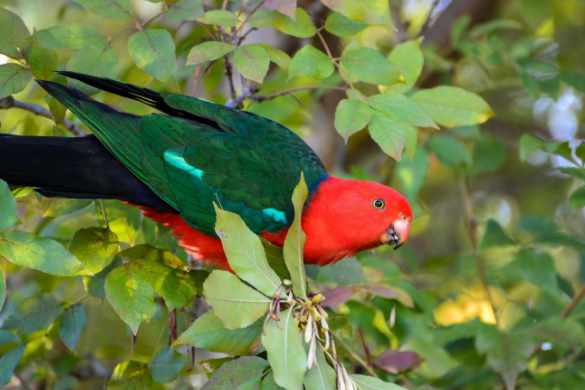
Parrots raised in cages under the supervision of a human have weaker bodies. They are way different than the parrots aged in their natural habitat. For instance, wild parrots can travel long distances. They are accustomed to flying. Plus, their beaks are much stronger than captive parrots. Wild parrots use their bill for nearly everything, such as:
- For climbing up high places such as trees
- For crushing the bones of small animals
- To attack and defend themselves from predators
Domesticated parrots have the luxury of living in a safe environment where they don’t have to worry about any predators. So naturally, they have underdeveloped beaks and wings. They don’t need to use their beaks to survive and hunt for food. Their owners offer them toys to hold on to and play with, but most of them are made from software material.
Domestic parrots are usually kept in their cages. They are not used to travel long distances. So they are unable to fly like their wild counterparts.
- Right climate
A parrot is not a bird that you can find all around the world. There are some specific regions in which a parrot can survive.
Most of their species are native to warm climates and tropical locations. These species thrive in hotter temperatures and have a tendency to flee from cold environments.
Releasing a parrot outside its natural habitat would undoubtedly bring additional challenges for the little bird. And let’s not forget the fact that pet parrots are used to human temperatures. They are likely to prefer an indoor environment with few chances of getting wet, less wind, and a constant temperature.
- Food
Domestic parrots are taken care of by their humans. They don’t need to hunt for their own food. If they are hungry, they will simply repeat some words or squawk, and you will provide them with what they need. Your pet birds are not accustomed to seeking food on their own. They probably don’t even know what food looks like as their food is often processed. That’s why most domestic birds have difficulty finding meals in the wild.
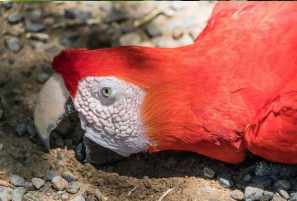
When a domestic parrot looks for food in the natural environment, it can’t differentiate between edible and inedible. Wild parrots learn these skills from their parents. Hand-reared parrots don’t know how to fetch food. They might eat something that can make them extremely sick.
Many escaped parrots live in the parks where kind humans feed them seeds and bread. But this isn’t enough to satisfy their nutritional requirements. They need a lot more to prevent any health issues.
- Stress
If you are a parrot lover, you may already know that these social creatures require constant attention and company. In the wild, they depend on their flock for survival. So unless your bird finds a herd of the same species (and is accepted by the flock), it won’t keep afloat.
Parrots have a life expectancy of around 40 to 75 years. Some parrots have been known to live even beyond that. But social isolation can significantly shorten a parrot’s lifespan.
The stress of loneliness leads a parrot to a disordered mental state. In this state, the bird is unable to take care of itself. It begins developing strange behaviors such as
- Self-mutilation
- Lunging
- Unnecessary biting
- Excessive squawking
Even if your parrot is lucky enough to find a flock in the wild, this display of aggression will eliminate any chances of its acceptance in the group.
- Socialization
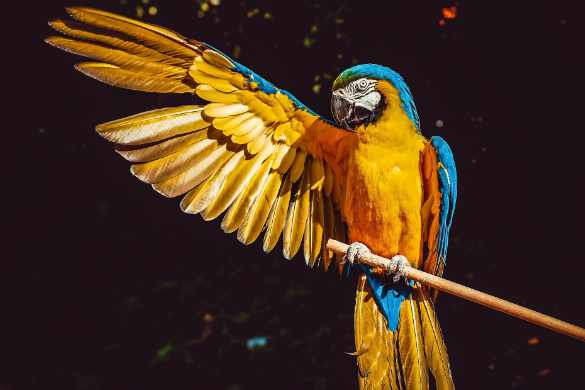
Parrots need a group to survive in the wild. Even wild parrots cannot live on their own for very long. If they are shunned from their group, they need to find other companionship as quickly as possible, or their health will start to decline (if they aren’t already killed by a predator!)
A parrot may not be the right fit for the flock for many reasons. But the most common reason behind this disregard is the violation of the social hierarchy of the flock.
Parrots, whether captive or wild, follow a strict pecking order. Anyone or anything they dislike stays at the bottom of their pecking order. Domestic parrots have their humans they choose to stay close to. Their favorite humans remain at the top of their pecking order. However, some domestic parrots place themselves at the top of their pecking list, making them demanding. They feel it is their right to have your constant attention. Your little bird can expect servitude from people they believe are lower than them.
This behavior makes it difficult for hand-reared parrots to enter into a wild flock. They have no training to respect their fellow parrots. Therefore, they are rarely accepted by the wild flocks.
- Predators
Domestic parrots don’t have to worry about any life-threatening attacks. Some households have cats, but most owners know how to keep their pets away from danger. Plus, the parrot knows it can fly back to its cage anytime.
Domestic parrots don’t have this shelter in the wild, and they don’t know how to defend themselves. Not only that, but they also don’t know what other predators are out there keeping an eye on them. Without any help from their human or flock mates, your parrot has little chance of survival. So if starvation and disease don’t kill it, a hungry predator might.
What happens if you release a domestic parrot in the wild?
If you release a parrot into an unsuitable environment and without any training, the following are the challenges your parrot might face:
- Unknown dangers
Captive pets are protected from dangers by their owners. Their humans ensure that they are safe and away from any circumstances that may hurt them. Responsible owners never put their beloved bird in any risky situation. Therefore, captive birds are unfamiliar with the dangers of the outside world. Sadly, most of these birds never had a chance to learn from their flock mates and parents. This means other creatures can be a risk to your parrot’s life, and the little fella may not even realize it.
- Food hunt
This point is pretty obvious, and it is essential as well. Domestic parrots are used to eat food provided for them regularly. Your pets are only familiar with the food you offer them and nothing else. Hunting for food is not something they are accustomed to.
For that, a domestic parrot is unlikely to know how to hunt for food. They may not know what is safe to eat and what’s not. Plus, your birds won’t have enough time to learn. They need to consume to survive, or else they may starve to death.
- Shelter
Caged parrots have insufficient experience of dangers. Domestic parrots don’t really know the best and safe places to shelter. In fact, they may not know what is safe or unsafe at all. Your bright bird may use its high animal intellect to find a perfect shelter. But “the perfect shelter” might be next to a fox den, which, you know, isn’t something really pleasing.
- Distress
The saddest part is that the bird will have to face a complete change in its routine, environment, places, and companionships. All these sudden changes are enough to take your parrot into a state of immobilization and depression.
Can baby parrots survive in the wild?
If circumstances are supported by luck, parrots can survive. If the climate is up to the requirements of that particular species, if the bird is young enough and can understand how to find food and shelter, if it is trained, if not killed by a predator, if it can join a local flock, then it can survive on its own. However, with even 100% optimism, the chances are very-VERY rare!
What are the alternatives to releasing a domestic parrot into the wild?
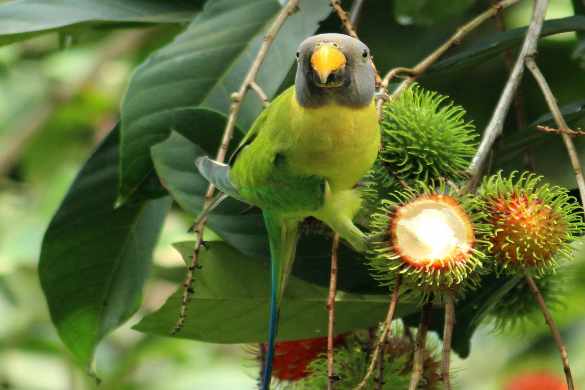
If you wish to release your domestic parrot into the wild just because the responsibility isn’t as easy as it seemed before, it’s the worst thing you can do. It is simply an invitation to the little bird’s death.
Many people adopt a lovely bird with the best intentions. But they don’t think about the enormous responsibility that comes with it. They eventually get stuck as they cannot keep it and can’t set the bird free into the wild either. So, what can they do?
Well, for starters, they can place their parrot with a caring owner who understands how to take care of a parrot. Owners can also set their little birdies for adoption.
If this doesn’t seem attractive to you, you can consult a bird sanctuary. Those people can provide you with a better piece of advice, and in most cases, they agree to take the bird from you. Such shelters have professional keepers who understand what exactly a bird needs to thrive in captivity.
How do parrot release programs work?
Now we know what you must be thinking, “I can’t release a domestic parrot in the wild, so what are these release programs?”
Well, technically, you can release a parrot into the wild if it is allowed by the law of your state. Release programs also free the birds, but they go about it very methodically.
These programs focus on releasing parrots that have a high probability of survival in the wild. The suitable candidates of these programs are parrots who are hatched in the wild, parrots that have been in captivity for a short duration, and parrots who have been adequately trained for life in the wild.
To consider a parrot for release, it must:
- Learn how to forage food like wild parrots
- Understand flock hierarchy
- Learn how to interact with other birds
- Know how to protect themselves from predators
Without these characteristics, you should never release a domestic parrot.
Wrapping Up
Parrots are adorably social beings. They depend too much on their caregivers. Releasing them into the wild without proper training is unfair as captivity does not equip them with the skills they need to prosper in the wild.
As a final statement, bird owners should never release their domestic parrots into the wild by themselves. Only professionals at a bird sanctuary or bird rehabilitation center have the expertise to do so. So let them handle this.

